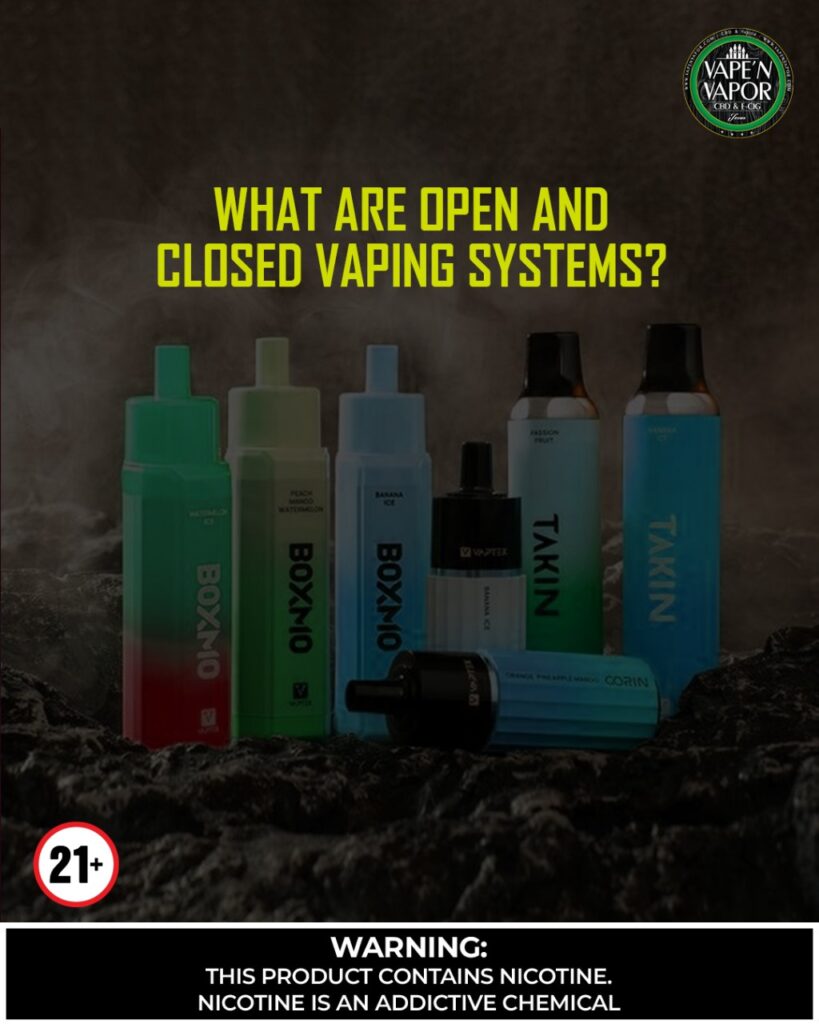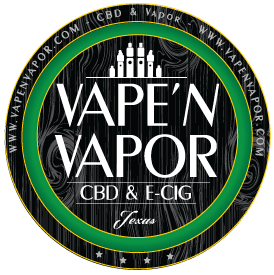No products in the cart.
WHAT ARE OPEN AND CLOSED VAPING SYSTEMS

19
Dec
Vaping has become a ubiquitous and evolving phenomenon, revolutionizing the way people consume nicotine and other substances. As the market continues to expand, users are faced with a countless number of options, with open and closed vaping systems emerging as two distinctive categories.
Open vaping systems, often referred to as open pod systems or open tank systems, offer users a customizable and versatile vaping experience. The defining feature of open systems lies in their refillable nature. Instead of pre-filled cartridges, users can manually fill the tank or pod with their preferred e-liquid. This flexibility allows for a wide range of flavor options and nicotine strengths.
Customization is offered in open systems, they empower users to tailor their vaping experience to their liking. With a diverse selection of e-liquids available on the market, users can experiment with various flavors, ranging from traditional tobacco to exotic fruits and desserts. This customization extends beyond flavor, allowing users to choose their preferred nicotine levels and VG/PG ratios.
While the initial investment in an open vaping system may be slightly higher than that of a closed system, the long-term costs tend to be lower. The ability to refill the tank or pod with e-liquid often proves more economical than purchasing pre-filled cartridges, especially for frequent vapers.
Open systems contribute to a more sustainable vaping experience. The refillable nature of these systems results in fewer disposable components, reducing the overall environmental impact associated with vaping.
Open vaping systems often come with advanced features such as adjustable airflow, variable wattage, and temperature control. These features provide users with greater control over their vaping experience, allowing them to fine-tune factors like vapor production and throat hit.
While open systems offer numerous advantages, they do come with certain challenges, such as a Learning Curve,the customization and flexibility of open systems may be overwhelming for beginners. Users must learn how to properly fill the tank, choose compatible e-liquids, and adjust settings. However, many manufacturers provide user-friendly devices with intuitive interfaces to ease the learning curve.
Next comes maintenance. Open systems require regular maintenance to ensure optimal performance. Cleaning the tank or pod, replacing coils, and monitoring other components are essential tasks that users must be willing to undertake.
Now come the closed vaping systems, also known as closed pod systems, present a more straightforward and user-friendly approach to vaping. These systems come with pre-filled pods or cartridges that users simply insert into the device. Closed systems are often favored by beginners or individuals who prefer a hassle-free vaping experience.
Something very unique about this is its Simplicity. Closed systems are incredibly easy to use, making them ideal for beginners. There is no need for manual refilling or dealing with e-liquids. Users can simply insert a pre-filled pod, and the device is ready to use.
Another thing that is absolutely loved by consumers is its portability. Closed systems are generally more compact and portable than open systems. The pre-filled pods are convenient for users on the go, eliminating the need to carry bottles of e-liquid. This portability makes closed systems popular among individuals who prioritize convenience and discretion.
With closed systems, users can expect a consistent vaping experiencewith each pod. The pre-filled pods are designed to deliver a specific flavor profile and nicotine level, ensuring uniformity in each session. This can be appealing to users who prefer a reliable and predictable experience.
While closed systems offer simplicity and convenience, they also have some limitations, such as the limited Flavor Options. The pre-filled pods in closed systems often come in a limited range of flavors. Users may find themselves constrained to the available options provided by the manufacturer, limiting their ability to explore a diverse range of e-liquids.
Something people might absolutely hate about closed systems is its Cost, the cost of using closed systems can add up over time. Pre-filled pods are typically more expensive on a per-milliliter basis compared to buying e-liquid for open systems. This can result in higher long-term expenses, especially for frequent vapers.
To conclude in the vast world of vaping, the choice between open and closed systems ultimately boils down to personal preferences and priorities. Open systems offer unparalleled customization and cost-effectiveness, catering to those who enjoy experimenting with various e-liquids and settings. On the other hand, closed systems provide simplicity and convenience, making them an attractive option for beginners and users who prioritize ease of use.
Regardless of the chosen system, it is essential for users to prioritize safety, be aware of the ingredients in e-liquids, and adhere to proper maintenance practices. As the vaping industry continues to evolve, we can expect further innovations in both open and closed systems, providing users with even more choices and opportunities to tailor their vaping experience to their liking.
